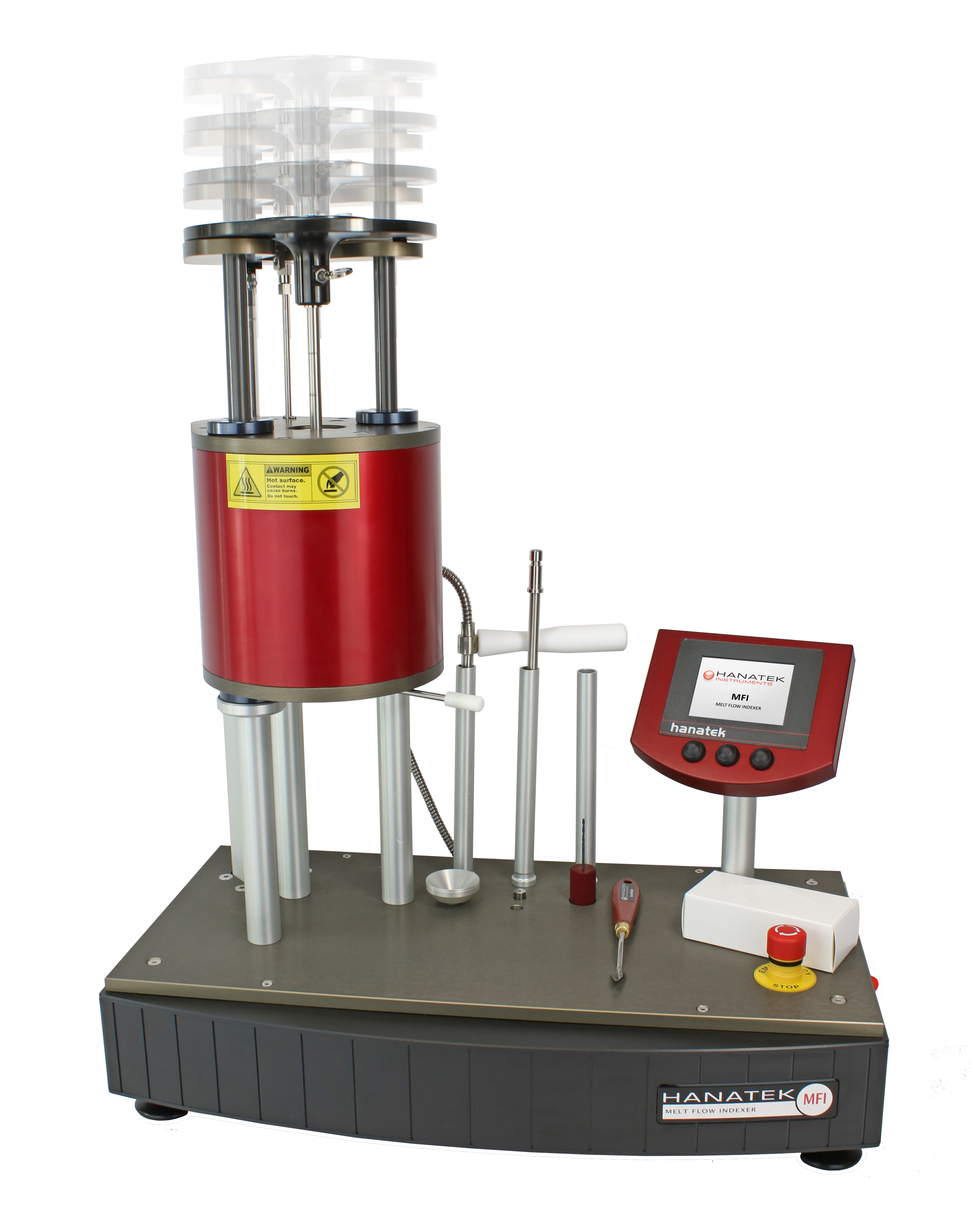Melt Mass-Flow Rate / Melt Volume-Flow Rate

HANATEK Melt Flow Indexer Instrument
The Melt Mass-Flow Rate is a one number indication of the viscosity of a polymer in the melt phase. It is defined as the mass of polymer in grams flowing per 10 minutes through a capillary of specific diameter and length by a pressure applied via a range of standard weights at specified temperature.
MFR is a simple test and is useful in that a feel for polymer viscosity can be attained very quickly. Furthermore, the MFI value is indicative of polymer weight average molcular weight and, if using the ratio of two MFR values from dissimilar weights (flow rate ratio-FRR), its molecular weight distribution.
The test also lends itself to the determination of melt density, which is an essential parameter in an overall characterisation.
MFR constitues one of the most frequently used tests in the polymer converting industry to control incoming material quality, since it is quick and requires very little operator training to return representative results. Some companies prefer the use of the melt volume rate (MVR) instead of the MFR value.
The MVR is reported in cm3/10 mins; the only difference being that MFR, a mass flow rate, requires the density to be known beforehand.
The method is detailed in the following two well known standards: ASTM D1238 and ISO 1133.
FlemingPTC uses the latest Hanatek MFI (see picture) with automatic weight lifting and maximum temperature of 400 degrees C. Masses available include: 2.16Kg, 5Kg, 10Kg and 21.6Kg. Die diameter, 2.095mm: die length 8mm. The model is designed to adhere to the following standards:
The Hanatek MFI is a state of the art instrument boasting three-zone temperature control for maximum accuracy. It also has the unique ability to check it's own temperature calibration and, if subject to drift, implement a new calibration using a UKAS certified calibration kit, eliminating the need for manufacturer or third part agent intervention.
The melt flow rate is an indirect measure of molecular weight, high melt flow rate corresponding to low molecular weight. At the same time, the melt flow rate is a measure of the ability of the material's melt to flow under pressure.
The melt flow rate is inversely proportional to the viscosity of the melt at the conditions of the test, though it should be born in mind that the viscosity for any such material depends on the applied force.
Ratios between two melt flow rate values (FRR) for one material at different gravimetric weights is often used as an indication the broadness of the molecular weight distribution.
Melt flow rate is very commonly used for polyolefins, polyethylene being measured at 190°C and polypropylene at 230°C.
The plastics converter should ideally choose a material with a melt index high enough to easily form the polymer into the article intended, but on the other hand, low enough that the mechanical strength of the final article will be sufficient for its use.
Summarising, MFR/MVR is:
- An easy to use 1 number test
- Indicative of weight average molecular weight
- Indicative of polymer melt viscosity
- Indicative of molecular weight distribution
- An easy to impliment quality test
- Easy to implement incoming material accepatnce test
- Essentially a simple capillary rheometer
Telephone:
01299 251 914
Our postal address:
Fleming
Polymer Testing Ltd,
Holly House
Hartlebury
Kidderminster
DY11 7TE UK

